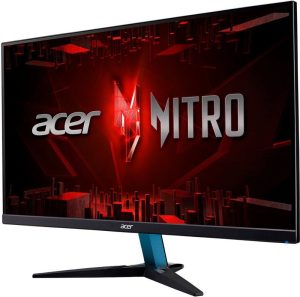No matter what type of business you’re in, tracking expenses is essential. Here’s how to make sure you’re using the best apps to help.
Gathering receipts from business trips and other expenses can be a tedious and painful process. At the end of the month, the last thing an employee wants to worry about is digging up the documentation they need for an expense report. The traditional approach to expense reporting uses up your team’s precious time and may even add to their work-related stress and frustrations.
SEE: Travel and business expense policy (TechRepublic Premium)
Expense tracking and reporting applications are solutions that help to alleviate some of these pains for both the employee and the employer. For the employer or manager specifically, being able to track spending can provide better and more immediate visibility into how well the business is handling money and if any changes need to be made to business travel policies.
If your business is interested in adding a business expense management tool to your tech stack but you’re not sure where to start your search, we’ve compiled a list of five of the best expense tracking solutions for business travelers. We’ll discuss these apps’ key features, pros, cons and pricing.
Jump to:
Top expense tracking solutions: Comparison table
Best expense tracking solutions for business travelers
Expensify: Best for capturing receipts

Expensify is great at capturing receipts, but that’s not all. In addition, it offers other helpful expense tracking features, including automatic mileage tracking, trip reminders, expense categories and flight delay notifications.
The problem with paper receipts is that they can be easily misplaced. Expensify allows you to immediately upload receipts into its app by taking a photo through your smartphone’s camera. Although most of the top expense reporting apps offer receipt capturing, Expensify’s approach is particularly effective and user-friendly.
Key features
- Integrates with various applications, including Uber, QuickBooks and Gusto
- Business travel mileage tracker using GPS
- Expensify business credit card
- Automatic receipt scanning for details
Pros
- Easy to tag, group and categorize expenses in a report
- Next-day reimbursement
- Complimentary receipt scans per month available with free version
Cons
- Automatic receipt reading can take longer than manual input
- Uploading PDF receipts is not as intuitive
Pricing
- Free: $0
- Collect: $5 per month per user
- Control: $9 per month per user
With the paid version, users get custom reporting, access control features and more.
QuickBooks Online: Best for comprehensive expense reporting

QuickBooks Online is a well-known accounting software package. It offers one of the most comprehensive expense reporting apps with several advanced features, including real-time dashboards, automatic bank accounts, PayPal and credit card sync. The app automatically categorizes expenses, although you can overrule that manually.
If your business already uses QuickBooks for accounting, then using it for expense reporting will be a natural fit. However, the interface can be challenging for new users, especially compared to other competitors that offer cleaner and simpler UI.
Key features
- Integrations with over 650 third-party apps
- Profit and loss report generation
- Customized reports with business logo
- Multiple permission levels for user access
- Accountant access
Pros
- Excellent security features, including firewall-protected service and encryption technology
- Ability to link credit card and bank accounts
- Automatic expense tracking in multiple currencies
Cons
- Expensive
- Not-so-friendly user interface
Pricing
- Simple Start: $30 per month
- Essentials: $55 per month
- Plus: $85 per month
- Advanced: $200 per month
QuickBooks Online has frequent discount offers for each of its plans.
Goodbudget: Best for beginners

Goodbudget is ideal for business users who want to report expenses with a simple and easy-to-use app. Goodbudget offers “digital envelopes,” allowing users to more easily track their expenses, savings, taxes and more. Users can also view the data with graphs for a quick visual representation. Goodbudget’s intuitive user interface means it takes little time to figure out how to use the app.
If you don’t want an app with a steep learning curve, Goodbudget could be the best choice for you. However, there are a few downsides to consider when making your decision. With this app, you need to manually enter expenses, as there is no automatic scanning. It is also lacking an auto-sync feature for bank accounts and credit cards.
Key features
- Imports for bank transaction files
- Support for multiple users and devices with the paid plan
- Debt Accounts feature to track payoff progress
- Ability to sync and share budgets across users
Pros
- Friendly user interface
- Support for multiple devices through auto-syncing
Cons
- Limited features
- Manual inputs needed
- No syncing with bank accounts and credit cards
Pricing
- Free: $0
- Plus: $8 per month or $70 annually
Everlance: Best for mileage tracking

Everlance is an expense tracking app for businesses and self-employed professionals. It is ideal for users who need to track mileage, simplify reimbursements and meet tax compliance requirements. The app allows users to track 30 business trips per month for free, but if they need more, they can subscribe to a paid plan.
Everlance is one the few expense tracking apps that offers automatic mileage tracking in its free version. The free version comes with a seven-day premium trial, so you can test it before deciding if the paid plan is worth it. Finally, Everlance’s customizable workflows are excellent, giving you the ability to set custom expense rules and automate recurring expenses.
Key features
- Automatic mileage tracking
- Long sessions tracking
- Customizable workflows
- Team reporting
Pros
- Ability to export mileage reports to different formats
- All plans have an unlimited number of users
- IRS-compliant mileage log
- Mileage and expense tracking in one app
Cons
- Free plan does not link to bank accounts or credit cards
- Paid plans can get expensive
Pricing
- Free: $0
- Mileage Tracking and CPM Programs plan: $12 per user per month
- Fixed & Variable Rate (FAVR) Programs plan: Contact Everlance for more information
Emburse Spend: Best for quick approvals

Emburse Spend offers some of the fastest processing speeds on this list. Users can input expenses from various sources, including receipts and credit card transactions.
One of the key features of Emburse Spend is the ability to automate expense approval hierarchy, making it faster to approve expenses. In addition, you can add expense policy rules, which can automatically check each report’s levels of compliance before submission. The simple dashboard further expedites the approval process.
Key features
- Budget control features to limit expenses
- Expense reconciliation through multiple devices and users
- GPS mileage tracking
- Automatic credit card monitoring
- Next-day reimbursement
Pros
- Quick approvals
- Direct reimbursement for employees
- Integrations with many top accounting software solutions
- Many features available in free version
Cons
- Users report technical issues with receipt scanning and reimbursement
Pricing
Emburse Spend primarily advertises its free version. However, interested prospective buyers can talk to the Emburse team directly if they would like a quote for a customized package.
Expense reporting app FAQ
What is the best way to track expenses?
The best way to track expenses is with an expense tracking app that stores data and automates several steps of the process. The top expense tracking apps allow users to capture receipts and automatically scan them to gather information such as date, bill amount and location. Expense tracking apps are ideal for companies with frequent business travel and/or companies with multiple employees and departments needing to track expenses.
SEE: Payroll processing checklist (TechRepublic Premium)
There are a variety of methods to track business expenses. The traditional method is to record all expenses in a notebook or personal ledger and store all of the receipts. This method has become outdated, as it’s inefficient and prone to data loss and errors. A better way to manage expenses is to use an expense tracking app.
What are expense trackers used for?
Whether it’s a small business or a large enterprise, tracking expenses is vital to the business’s health. Expense trackers allow employees to track their expenditures along with receipts or other documents that are needed to verify the expenses.
Employees can use an expense tracking app to get reimbursement for their spending on business-related activities. If they have used a company credit card, the expense report can be used to monitor and verify the expenses.
While tracking and verifying expenses is important, employers prefer that expense tracking does not interfere with other job responsibilities and duties of the employee. Expense tracking apps come in handy, because they allow the employee to capture photos of receipts through their smartphone, send the expense report for approval to their supervisor and utilize other expense management features to maximize efficiency.
How to choose the best expense tracker app
You must consider several factors to choose the best expense tracker app for your business. It is best to start by making a list of priorities or features you need. For example, if you have employees that do a lot of business travel on the road, you would benefit from using an expense tracking app that offers GPS tracking, making it easier for users to track their mileage.
SEE: Mobile device security policy (TechRepublic Premium)
Similarly, if you plan on integrating the app with your existing tech stack, check compatibility before making your decision. Other factors to consider include automatic syncing with bank accounts and credit cards, price, and ease of use. Most expense tracking apps offer a free version, so it’s a good idea to try the app for a few days before making the purchase.
Read next: Top invoicing apps for small businesses and self-employed individuals (TechRepublic)
Source of Article



